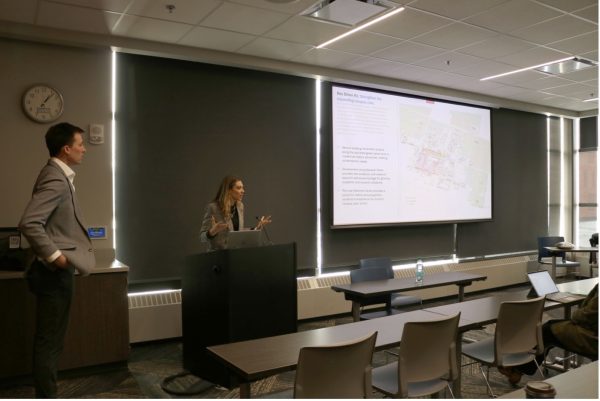Master’s student examines demographic trends using remote sensing
August 10, 2011
BROOKINGS, S.D. — Paul Mantz, a South Dakota State University geography master’s student from Sioux Falls, is gaining valuable experience this summer at Oak Ridge National Laboratory in Oak Ridge, Tenn., toward earning his degree.
The Oak Ridge Institute for Science and Education is a U.S. Department of Energy institute that focuses on scientific initiatives to research health risks from occupational hazards, assess environmental cleanup, respond to radiation medical emergencies, support national security and emergency preparedness and educate the next generation of scientists.
Working alongside geographic information science and technology professionals at ORNL gives Mantz hands-on opportunity with state-of-the-art technologies that gather satellite imagery information and develop global demographicdata.
The use of GISc and remote sensing enables the team to watch formal and informal demographic settlement trends such as slums, barrios and squatter communities. Currently, the group is observing settlement patterns among people in South America, Central Asia, The Middle East and Africa.
George White, head of the SDSU Department of Geography, said the internship is helping Mantz gain more experience in cutting-edge GISc applications. “In this case, Paul is learning about human geographical patterns by working on a project that is using remotely-sensed data to identify settlements around cities such as Mexico City; Kabul, Afghanistan; Bucharest, Romania; Lima, Peru; and Addis Ababa, Ethiopia; in order to detect regional patterns,” said White. “Jobs in GISc are growing, but the good ones are very competitive.”
Mantz anticipates that gaining new skills in geographic information science and remote sensing technologies and methods will prove valuable for conducting research activities. He said he appreciates the guidance with methods, technologies and research techniques he has received from experts in the field.
“What I find to be most interesting about geography is the holistic approach the field of study provides,” said Mantz. “It is able to examine a wide range of topics from a variety of physical, political and human geographical perspectives while considering important patterns, scales, and relationships.”
Courtesy of sdstate.edu/news





















